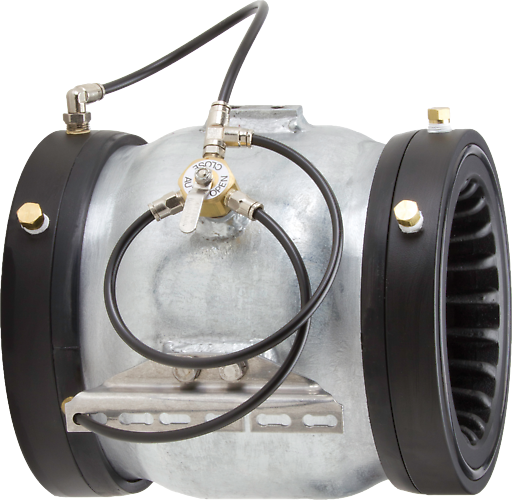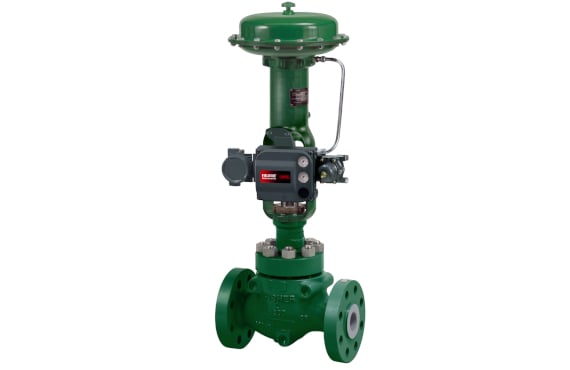Enhancing Operational Efficiency with Advanced Control Valves
Enhancing Operational Efficiency with Advanced Control Valves
Blog Article
Achieve Seamless Combination and Control With Quality Building Automation Controls
In the realm of modern structure monitoring, the value of top quality structure automation controls can not be overemphasized. Embracing quality structure automation controls is not merely a matter of comfort yet a tactical important for organizations intending to maximize their centers' efficiency and sustainability.

Advancement of Building Automation Controls
Throughout the past couple of decades, the evolution of building automation controls has dramatically changed the way structures are taken care of and operated. Constructing automation systems primarily focused on basic functions such as regulating ventilation, air, and heating conditioning (COOLING AND HEATING) systems. However, as modern technology advanced, these controls have actually ended up being much more advanced, enabling a larger variety of structure systems to be integrated and taken care of centrally.
The development of constructing automation controls has seen a change towards even more smart systems that can adapt to transforming problems in real-time. This flexibility is important for maximizing power efficiency and making certain occupant convenience. Additionally, contemporary structure automation controls now use functions such as predictive maintenance, remote monitoring, and data analytics, making it possible for center supervisors to make data-driven decisions to boost structure efficiency.

Benefits of Quality Integration
The improvement in structure automation regulates in the direction of even more intelligent systems has underscored the substantial advantages of top quality integration in maximizing building procedures and improving general effectiveness. This central control additionally provides much better visibility and insights right into building efficiency, making it possible for proactive maintenance and optimization techniques. In general, the benefits of top quality assimilation in structure automation controls are indisputable, supplying boosted efficiency, convenience, and functional effectiveness.
Boosted User Experience and Accessibility
Enhancing user communication with structure automation manages with intuitive style and improved availability raises the overall experience for owners and center supervisors alike. By concentrating on customer experience, building automation systems can come to be extra user-friendly and efficient. Instinctive user interfaces, clear navigating, and personalized setups equip users to connect with the controls easily and effectively.
Accessibility features play a vital role in making certain that all people, consisting of those with specials needs, can utilize the building automation manages with simplicity. Including functions such as voice commands, tactile buttons, and color-contrasted displays can improve accessibility and make the controls much more comprehensive.
Furthermore, improved user experience causes higher customer complete satisfaction, boosted productivity, and far better decision-making. Residents can adjust environmental setups according to their preferences, while center managers can efficiently keep an eye on and manage building systems - control valves. In general, focusing on user experience and access in structure automation regulates adds to a much more smooth and efficient building useful link atmosphere for all stakeholders entailed
Lasting Practices With Automation

Moreover, automation can promote the combination of renewable resource resources such as photovoltaic panels or wind turbines into structure procedures. By instantly adjusting power use based on the schedule of renewable energy, structures can further lower their reliance on non-renewable resources. This seamless assimilation of sustainable techniques not just profits the setting yet also boosts the total operational performance and cost-effectiveness of the building. With automation, structures can align with contemporary sustainability objectives and add to a greener future.
Future Trends in Building Control Solution
One famous trend forming the future of building control systems is the enhanced assimilation of Artificial Intelligence (AI) and equipment understanding. Furthermore, the Web of Points (IoT) is reinventing building control systems by connecting tools and sensing units to streamline procedures and enhance effectiveness.
One more vital pattern is the emphasis on cybersecurity actions to secure versus prospective threats to developing automation systems. As structures come to be much more interconnected, making sure durable cybersecurity protocols will certainly be necessary to protect delicate information and avoid unapproved access.
Additionally, the change towards cloud-based platforms is getting momentum, enabling for systematized control and remote accessibility to building systems. This assists in simpler monitoring, maintenance, and updates, improving the overall efficiency and adaptability of structure control systems. As innovation remains to advance, these trends are expected to shape the future landscape of building automation controls, driving innovation and sustainability in the developed atmosphere.
Final Thought
Finally, constructing automation controls have actually evolved considerably, providing various benefits such as improved individual experience, access, and lasting techniques. Quality assimilation plays a key duty in attaining smooth control and reliable procedure of structure systems. Future fads in building control find out systems are likely to focus on additional enhancing automation capabilities for enhanced power performance and total performance. It is vital for building owners and operators to focus on the fostering of quality structure automation regulates to enhance building operations and achieve long-lasting sustainability goals.
In the realm of contemporary structure monitoring, the importance of top quality structure automation controls can not be overemphasized. Overall, the advancement of building automation regulates continues to drive development in the my blog structure administration sector, providing brand-new opportunities for creating smarter and a lot more sustainable structures.
The improvement in structure automation manages in the direction of more smart systems has actually emphasized the considerable advantages of quality assimilation in optimizing structure procedures and enhancing overall efficiency. Overall, prioritizing individual experience and accessibility in structure automation controls contributes to an extra productive and seamless building atmosphere for all stakeholders entailed.
It is vital for structure owners and operators to focus on the fostering of top quality building automation manages to maximize structure procedures and achieve long-lasting sustainability objectives. - control valves
Report this page